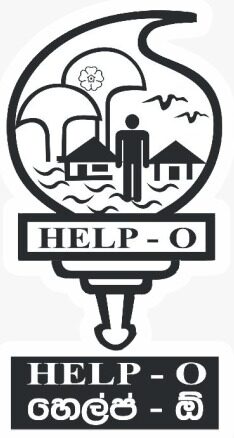Technology to counter plastic pollution

In terms of producing mismanaged plastic waste, some of the big names in the world economy such as the USA, China, India, Germany and even Japan are evidently names of culprits including India – the biggest plastic polluter in the world – reportedly producing almost 13 million tons of plastic waste annually (according to World Population Review). India, China and quite a few other Asian countries – including The Philippines, Thailand, Indonesia, Vietnam, and Malaysia – also dominate the list of the world’s top largest ocean polluters. Compared to these giants of plastic polluters, the mismanaged plastic waste Sri Lanka produces annually might seem minuscule but considering the extent of the country and its population Sri Lanka produces an alarmingly large amount of plastic waste per capita which also is a proportionately high amount for a country so small.
As things stand now, Sri Lanka is braving a financial crisis and is in dire need of ways to fatten up its foreign currency reserves and tourism has emerged as the quickest and best solution. Among the multitude of tourist attractions, the country possesses its ecological treasures – the prime forests, unique flora and fauna, pure freshwater bodies, and pristine beaches and seas – which have been paid much attention, as of late, for their potential to lure foreign tourists. However, it is not as if all the problems are now solved and we can heave a sigh of relief thinking the crisis will soon be over as the environmental treasures of the country continue to face a multitude of threats; one of which is the plastic pollution.
Needs collaborative action
For ages, the relevant authorities have been trying to come up with sustainable solutions for the plastic waste issue, especially the ocean plastic issue which continues to pose threats to the popular beaches and shallow seas of the country. After continuously labouring to come up with solutions, what the authorities have realised is that the best viable way to find long-lasting solutions for plastic pollution is not just through the efforts of the relevant Government authorities but via healthy public-private partnerships that gather much broader sections of the society to work towards ending plastic pollution. This includes working with local and foreign environmental organisations, getting into partnerships with private organisations that promote sustainability and eco-conservation, receiving support from foreign donor organisations, encouraging the public to engage more and raising awareness among them regarding the importance of preventing plastic pollution, promoting eco conservation at school level encouraging school children to actively engage in finding solutions for plastic pollution and so on.
Among the foreign organisations which fund the eco-conservation efforts of Sri Lanka are the Basel, Rotterdam and Stockholm Conventions of the United Nations Environment Programme (UNEP), US AID and its GCBO (Green Cities Blue Oceans) initiative, Institute for Global Environment Strategies (IGES) in Japan, Norwegian Agency for Development Cooperation (Norad), and many more. In collaboration with these foreign organisations that lend helping hands, the Sri Lankan Government as well as local private organisations involved in eco-conservation are carrying out many timely and important projects.
Help O helping Galle
Recently, parallel to the World Environment Day observations this year, a special training and policy-making session was held in Colombo. Organised by the Environment Pollution Control and Chemical Management Division of the Ministry of Environment in collaboration with the Secretariats of the Basel, Rotterdam and Stockholm conventions, the event was participated by the representatives of the international organisations, the Director of the Environment Pollution Control and Chemical Management Division Mahinda Werahera and also the Secretary of the Ministry of Environment Dr. Anil Jasinghe who was the Chief Guest. Also in the attendance were representatives from US AID, GCBO, IGES, and other relevant Government and private authorities. The highlight of the event was the field visit which was the last item on the session agenda. The group of dignitaries travelled to Galle to witness the ‘best plastic waste mitigation project’ in the country which happened to be the ‘Making Galle City Plastic Waste Free’ project, initiated by the local eco-conservation organisation Help O Eco Green Limited.
Monitoring Moda Ela
The group of representatives observed four eco-conservation initiatives carried out by Help O, two of which involve the active participation of school children in the area. Among them, the project ‘Moda Ela’ garnered much attention from dignitaries since it combined human power as well as technology.
Funded by the UNEP, Basel Convention, IGES and Norad, the ‘Moda Ela’ project – a real-time floating plastic litter identification AI-enabled smart CCTV system – was initiated by Help O and it combines satellite technology, artificial intelligence, CCTV monitoring systems, and human labour – mostly for maintenance purposes – to monitor, calculate and categorise waste in the canal called Moda Ela in Galle. Speaking to Ceylon Today, Chairman/CEO of Help O Chathura Welivitiya elaborated more on the unique project that captured the attention of all.
According to Welivitiya, the ‘Moda Ela’ project is one pilot project which was under the larger ‘Making Galle City Plastic Waste Free’ project. The Technological support for the project – the technology, software, and camera systems – was provided by the Asian Institute of Technology in Bangkok, Thailand.
An advanced monitoring system
In a nutshell, the ‘Moda Ela’ project is a system of CCTV cameras that monitor the water flowing in the canal real-time and calculate all the plastic waste that flows in it. The AI system is able to not just monitor and detect plastic waste but also to categorise them for the latter convenience of researchers and policymakers. The different types of waste the system can separately calculate are; cups, cans, cartons, face masks, glass bottles, plastic bottles, Styrofoam, straws, plastics, polythene bags and a few other types of plastic-related waste.
As Welivitiya mentioned the data gathered via the CCTV monitoring are free for anyone to see. By visiting the Plastic Litter official website, plitter.org, anyone can see the live data as well as previous data, not just in Galle Sri Lanka but in other parts of the world where similar systems have been implemented such as Vietnam and Thailand.
According to the data gathered at the time of the field visit, the majority of the plastic waste flown in the canal, which ultimately ended up in the ocean polluting the sea, is plastic bottles. The CCTV monitoring system has counted 40,557 plastic bottles which were 86 per cent of all the plastic waste monitored through the system. In second place it was plastic straws which were 9,054 in number amounting to 9.9 per cent of all the monitored plastic waste. Although the polythene count was high in number (354,221 pieces counted) it only amounted to 2.2 per cent of overall plastic waste. Pieces of Styrofoam detected were 5,470 which was 1.3 per cent of all the plastic waste detected.
Why monitor plastic waste?
Since the data collected via the CCTV monitoring system are open source, anyone can access the data, as well as the data of other similar projects in other parts of Asia such as Vietnam. “However, this is the only such system in place in Sri Lanka,” Welivitiya said.
By and large, we are a passionate bunch who does our best to save nature. Lack of awareness and mindfulness, at times, might cause us to unknowingly contribute to environmental pollution but we try to sacrifice our convenience as much as we can and strive towards eco-conservation. This nature of us is evident by how many eco conservation and beach clean-up projects are being held in the country and how many of us are actively taking part in these efforts contributing our time and labour.
However, as Welivitiya mentioned, sustainable eco-conservation requires evidence-based action taken with the best interest of the future in mind rather than the present. “No amount of shramadana or beach clean-up projects will be enough to rid our beaches of plastic completely as long as we don’t have a mechanism to stop plastic from being accumulated on beaches in the first place. For that, we need effective policy decisions taken based on accurate data. This is where projects such as ‘Moda Ela’ come in. The data gathered via these projects are scientific, dependable, and accurate; and therefore, they come in handy when it comes to making policy decisions in the future,” Welivitiya said.
Creating an eco-conscious younger generation
The CCTV monitoring system is not just a progressive step taken towards eco-conservation but also a fine opportunity to bring the community together as well as educate the school children about the latest technology and create an eco-conscience in them. At the end of the field visit, the CCTV monitoring system of Moda Ela was officially handed over to the students of Vidyaloka College, Galle.
“The system comes with its own costs such as internet costs as well as occasional maintenance costs which will be borne by the school’s development association. By making this a community project, or rather a project that involves school children, we can create a generation of young ones who are much more eco-conscious as well as tech-savvy which, I believe, is the best way to protect nature in the future,” Welivitiya opined.
The effectiveness of the project and its objectives were admired by the representatives present and the Secretary of the Ministry of Environment Dr. Jasinghe too was in praise of it. As the Secretary mentioned, the collaboration of latest technology in countering plastic pollution is a progressive move in eco-conservation. He also said that handing the project over to schoolchildren could be a productive move.
Why Galle?
Galle is one of the leading cities in Sri Lanka which attracts a large number of tourists, especially foreign ones, annually. As a popular tourist destination, the city has to present itself in a sustainable manner in order to retain its tourists as well as to attract new ones. The sandy beaches, shallow seas, corals, heritage sites such as the Galle Fort and pristine forests alone wouldn’t be enough to sustain tourists if no action is taken to safeguard these precious attractions from potential threats such as pollution. As Dr. Jasinghe mentioned the Government is eyeing Galle to promote the city as a major tourist zone but before doing so, the eco-conservation and sustainable tourism should be mainstreamed. In this regard, as the secretary mentioned, progressive projects such as the ‘Moda Ela’ Project and other similar public-private partnerships are vital.
Future plans of Help O
The ‘Making Galle City Plastic Waste Free’ project is not the only eco-conservation effort of Help O. As Welivitiya mentioned, the organisation has so many other similar projects in the pipeline, all of which are conducted in partnership with the Ministry of Environment, international organisations and other local authorities.
Help O is in the process of developing a water monitoring and filtering system that detect and gets rid of microplastics in water. The system will be implemented at Jetwing Lighthouse, Galle. In collaboration with the Ministry of Environment, Ministry of Health, and Ministry of Education, Help O is planning to compile a teacher guiding book and a student workbook which will help include eco-conservation into the school curriculum. Moreover, the organisation also plans to compile a guidebook for hotels in Galle to educate them on sustainable tourism. “We have carried out an in-depth waste audit in the Galle area and now we plan to formulate the ‘five-year action plan’ based on the data gathered via the audit,” Welivitiya revealed another future project of Help O.
By Sanuj Hathurusinghe




